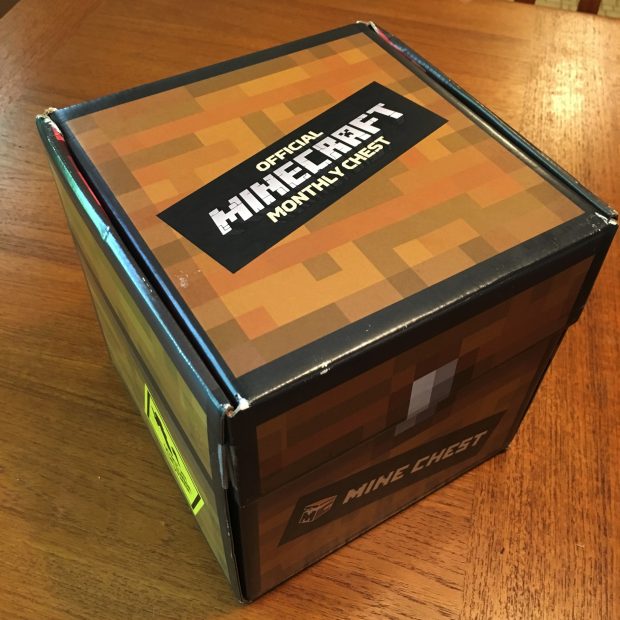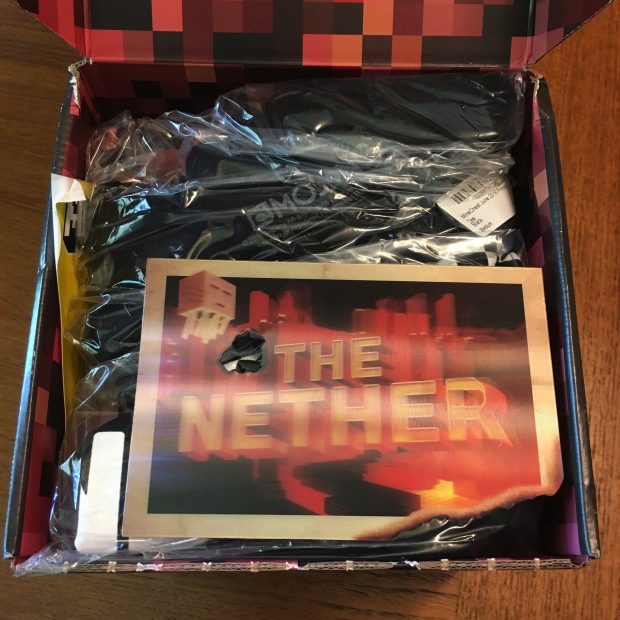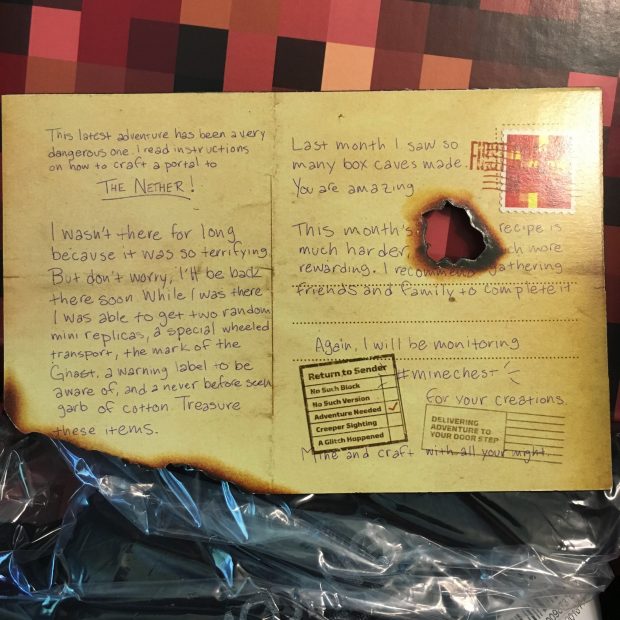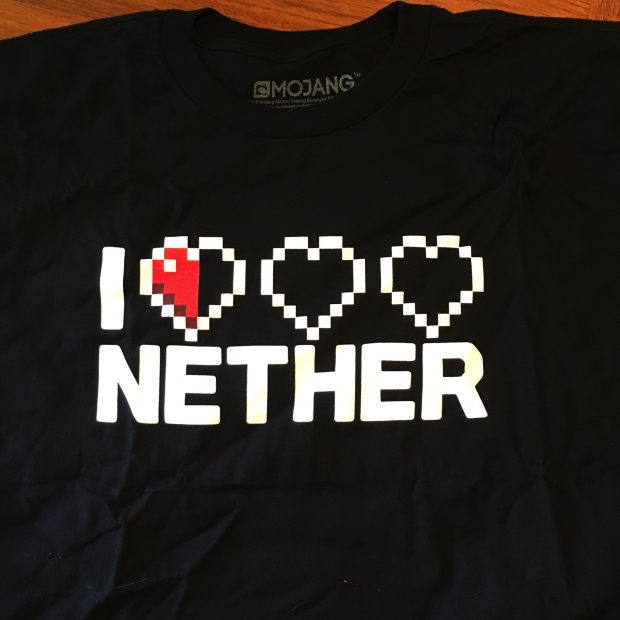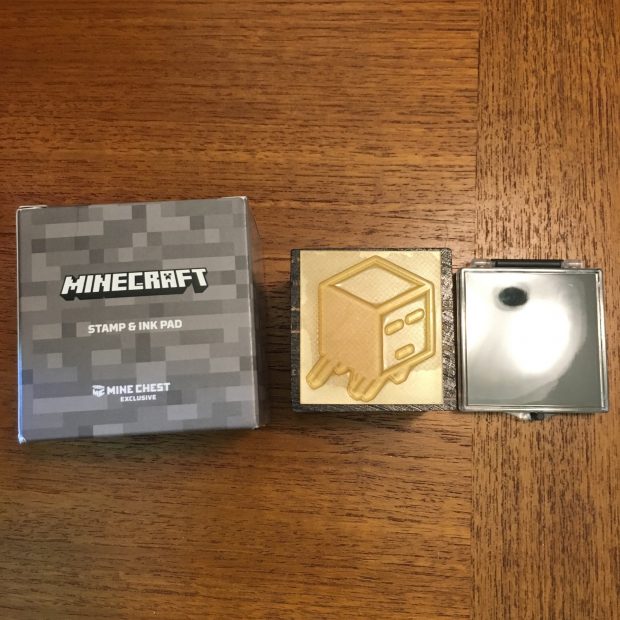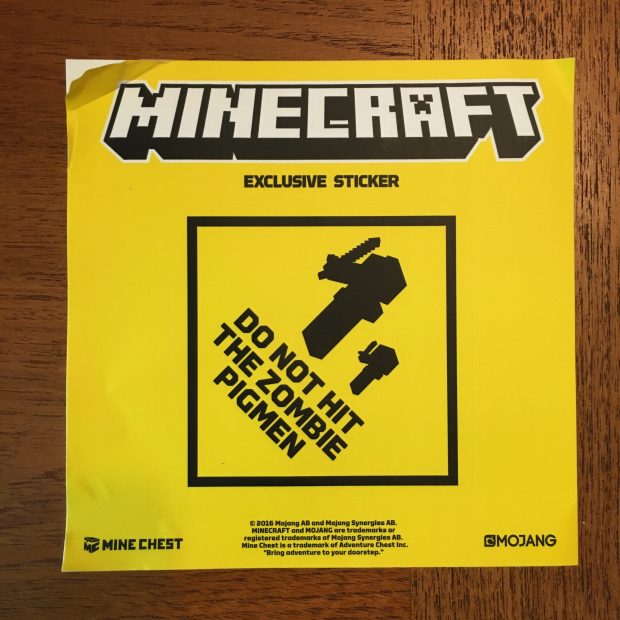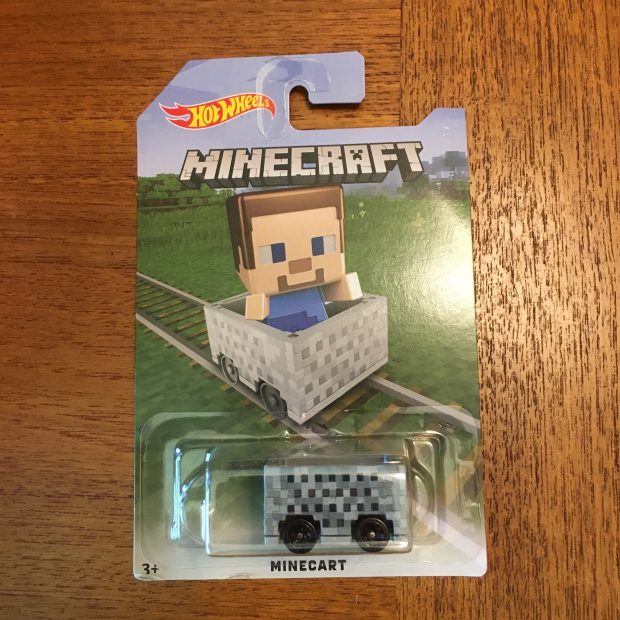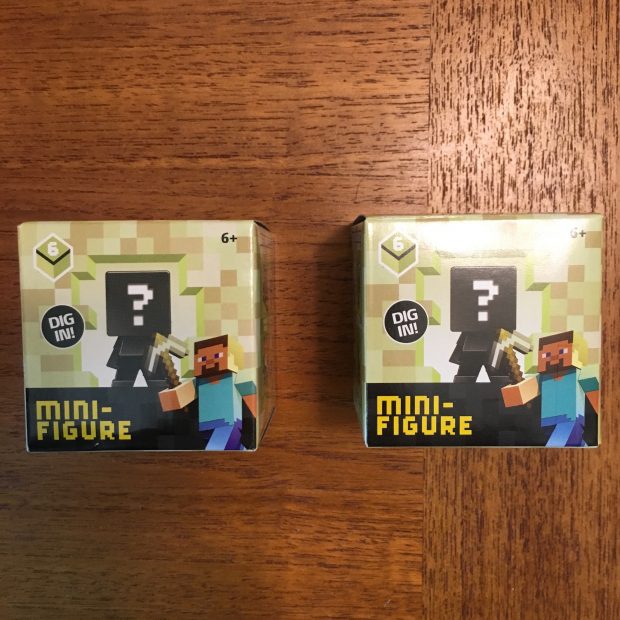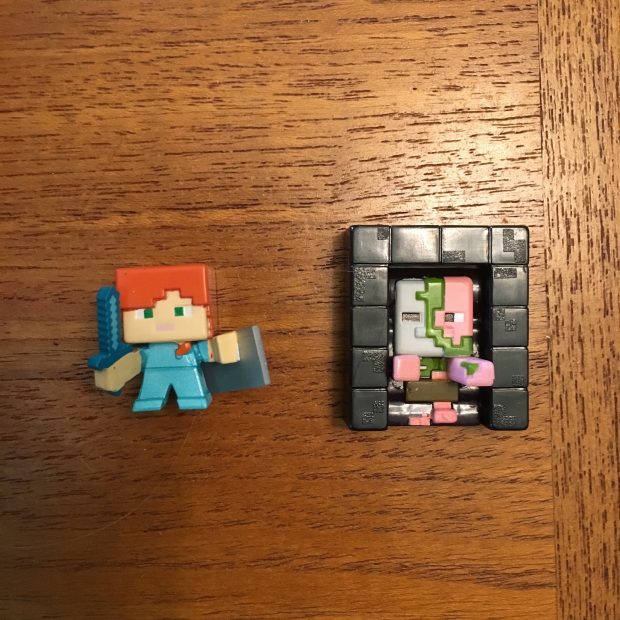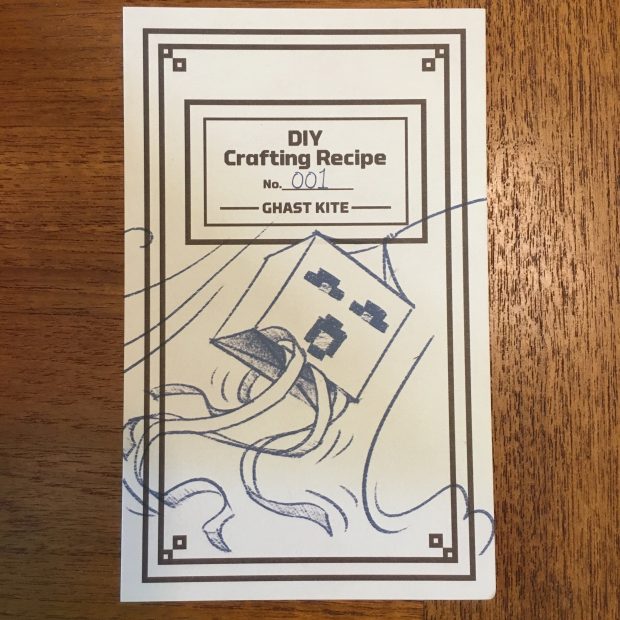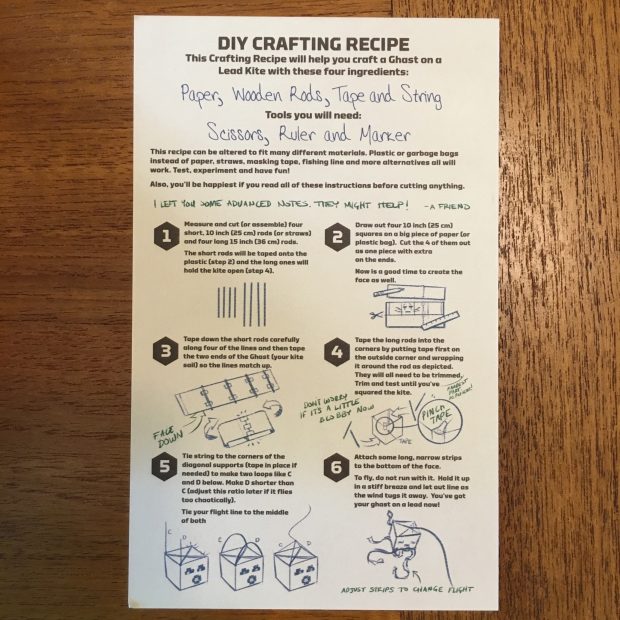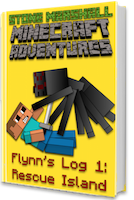Minecraft recreates the Great Fire of London
Videogames are no stranger to classrooms, however few games have made such an impact as Minecraft. There’s the qCraft mod that teaches players quantum physics, and the time Denmark was recreated to scale (before beingsubsequently levelled), and don’t forget MinecraftEdu and its official Microsoft-bought successor Minecraft: Education Edition.
The latest initiative, coming courtesy of the Museum of London, is a reinterpretation of the Great Fire of 1666 that lets players wander through the streets of 17th century London, chat to local civilians, combat the fire itself and latterly rebuild their own conceptualisations of the English capital. Three interactive maps will be made available for free from July 29, all of which will look something like this:
Map one, launching next week, features London Bridge, Pudding Lane, and the old Saint Paul’s Cathedral. A treasure hunt is designed to encourage exploration and will also give players the chance to uncover audio clips relevant to the events that led to the blaze.
To mark the disaster’s 350th anniversary, the second phase will arrive in September and will guide players through the start and spread of the Great Fire; while the third and final instalment is due to launch in February of next year—which is when players can set about rebuilding their own visions of the city.
“Minecraft is an incredible game that captivates and inspires users of all ages around the world,” says project lead Joshua Blair in a statement. “Its reach and versatility offers museums a fantastic platform to share our knowledge and collections, and create engaging experiences.”
Grab the first Great Fire 1666 Minecraft map when it becomes available next week, July 29, via the Museum of London website.
Minecraft Pocket Edition update incoming
The new Minecraft Pocket Edition v0.15.3 update is almost here for Google Play users but Mojang has revealed that the update has been delayed for Windows 10; the development team is apparently too busy playing Pokemon Go to update their game. Mojang has not yet give a release date or time period for this update.
Windows 10 Pocket Edition users will be seeing a few small game tweaks and bug fixes to improve the overall gameplay; none of the changes are particularly large but they will fix some minor annoyances that players have.
Bugs are the main focus of the update and a wide variety of small issues and assorted crash issues have been dealt with in this update.
While the gameplay tweaks are very small, they should make the gameplay more consistent and improve the overall player experience. Various screen layouts have been re-scaled and mouse controls should work better once the update has been released.
Minecraft Pocket Edition v0.15.3 will soon be available for all mobile platforms however Windows 10 users will need to wait a little while longer.
Piper’s Minecraft DIY computer kit teaches kids programming and engineering
A near-death experience led Mark Pavlyukovskyy, cofounder of Piper, to create a much-lauded DIY computer kit to teach children about technology.
Pavlyukovskyy was born in the Ukraine, and when he came to the US he began looking for ways to empower children in the ways that he and his friends in his home country were not empowered.
“I went down the biology medicine route for a while. I did this program in Africa where I was teaching kids about health, how to improve their health…I actually got sick myself doing it, and I almost died. That was a turning point where I realized the impact I want to have should be scalable and done through modern tools and involve programming or electronics,” Pavlyukovskyy said.
“I started building websites and different gadgets to help people, and I realized I could make an even bigger
impact if I gave kids the tools to build something themselves,” he said.
While Pavlyukovskyy was working on his Ph.D. at the University of Oxford, he was also busy building computer kits in his dorm room to send to children around the world. “The idea was to give kids all the parts to a computer, and they assemble it kind of like LEGO. The simple mechanics of assembling a computer could give them that feeling of empowerment that they can build a computer,” he said.
The eventual result of his work was the Piper DIY electronic kit with a Minecraft theme, since so many kids love Minecraft. The computer is housed in a wooden box, since wood is a cornerstone of the Minecraft experience. Once a child assembles the computer, using the blueprints that are included, they have a Minecraft game on the computer screen, with a storyline about a robot heading to Mars to try to stop an asteroid from hitting Earth. As children plug in wires and assemble the controller, they are able to move the robot in the game, he explained.
More than 3,000 kits have been sold, at $299 each, and the target audience is children ages 7 to 12, although children as young as 6 have successfully used it. It’s received rave reviews from everyone such as Elon Musk, who gave the kit to his children, to Steve Wozniak, who said, “I love Piper because it represents what enabled me to do all the great technology things in my life.”

The Piper computer kit comes with everything needed to assemble a computer, including a Raspberry Pi 3 microcomputer, an HD LCD display, a powerbank, a speaker, and a puzzle-like wooden case that is assembled and then houses the computer. Turning the computer on reveals the PiperCraft learning system that teaches kids engineering and programming through a combination of a storyline, physical building, and Minecraft gameplay. The core Piper experience seamlessly introduces engineering, electronics, and programming, allowing kids to create and program their own electronic gadgets through a custom Minecraft story mode.
Piper just received seed funding of $2.1 million to bring the product to more children and to provide it to classrooms. The funding came from investors including Princeton University, Reach Capital, 500 Startups, FoundersXFund, Jaan Tallinn (cofounder of Skype), and Jay Silver (founder of Makey Makey).
“We found that teachers were purchasing it on their own,” Pavlyukovskyy said, which spurred him to realize that the product needed to tie it into Common Core standards for wider distribution.
The goal was to make Piper accessible for teachers and the classroom, and the new funding will make this possible through PiperEDU, which is what Piper has named the product they’re developing strictly for schools, and which gives a hands-on approach to STEM education.
“Thousands of kids are already playing and building with Piper all over the world and to make the product more accessible to more students, we are introducing Piper to schools. Dozens of schools all over the world have beta tested the product and we are excited to bring it to schools everywhere,” said Joel Sadler, cofounder of Piper. “The Piper Computer Kit is like a Trojan horse for learning—it combines a familiar video game with physical building. Ultimately we want to boost everyone’s creative confidence with technology, programming, and engineering in a playful way.”
Dave McClure, founding partner of 500 Startups, said, “Combining coding and Minecraft is genius. Great to see my kids turn into little nerds; maybe they can pay for my retirement some day.”
Pavlyukovskyy said, “All of us have a lot of great potential inside of us. If we’re just given the tool to transform those ideas into other things I believe there’d be a lot of great new products and inventions out there.”
Piper’s Minecraft DIY computer kit teaches kids programming and engineering
Microsoft’s AI Is Playing Minecraft to Learn How the World Works
Microsoft is using an experimental version of its game Minecraft to test the limits of artificial intelligence.
Called Project Malmo (named after a Swedish city, as Minecraft originates out of Sweden), the new version of the game allows reinforcement-learning algorithms to control a character. Reinforcement algorithms, which are inspired by psychology, focus on putting artificial intelligences within a specific environment and letting them figure out how to gain further rewards. By making those rewards incremental, Microsoft researchers believe they can train the AI to learn goals.
Minecraft’s sandbox nature could turn it into the perfect training ground for AI. Within the game, AI can learn how to get out of mazes or holes on its own, and how to collaborate. “Minecraft is very close to the real world in many ways,” said Jose Hernandez-Orallo, a professor at the Technical University of Valencia, Spain, who has been part of a private preview of Malmo that Microsoft has offered to scientists. “There are so many possibilities.”
Research like Malmo requires repeated testing and trial-and-error, which is why working in a virtual environment like Minecraft is better than the real world. Malmo’s character often fall in lakes at this point, but it’s cheaper to have virtual characters fall into virtual lakes than to build robots that would do the same thing.
A human player can also enter the experimental mode, and they can work together and chat through a window. While the researchers for the project see wider implications than Minecraft, Malmo could also affect the way the game is played. “In the long run I want to work toward AI that can be taught by any user to help them achieve their goals,” Katja Hoffman, a researcher at Microsoft Cambridge in the U.K. who leads the project, told theMIT Technology Review.
Towards that end, Microsoft has made Malmo open source. They’ve released the code on GitHub and are encouraging even novice coders to try their hands at helping an AI Minecraft player build a house or craft a sword. “If I come across some YouTube video showing off some exciting new functionality enabled by our mod,” says Matthew Johnson, the development lead on Malmo, “that would make my day.”
Microsoft’s AI Is Playing Minecraft to Learn How the World Works
Baby, kids directory to hold 10-year anniversary Minecraft competition
The Malta Baby & Kids Directory will be celebrating its 10th anniversary by partnering with Headstart Technology to hold a children’s competition themed ‘Malta in Minecraft’ – encouraging children to create their favourite Maltese scene in the style of this very popular e-learning tool.
“We are very excited to explore creativity in all its forms, and this special anniversary edition is really taking our competitions in a completely new direction,” said Crysta Darmanin for Malta Baby & Kids Directory.
“When we launched EasyPeasy Coding earlier this year our aim was to showcase how technology can be a catalyst for creativity in young children. We believe that programmes like Minecraft are ideal ways to engage kids and can be so much more than just games,” said Klaus Conrad from Headstart Technology Limited.
Minecraft has become a global phenomenon, played by millions of children and adults alike. Recently acquired by Microsoft, Minecraft is best understood as an unlimited box of virtual building blocks, where players have complete freedom to create anything they want, from massive buildings to sophisticated machines.
The competition is open to children aged five to 12 and submissions may be physical models, colour print-outs of screenshots or exports. Many prizes are up for grabs, ranging from Raspberry Pi computers to Ozobots, free Minecraft accounts and course vouchers for EasyPeasy Coding workshops. Thought 3D will be printing reproductions of the top submissions.
Full rules and regulations may be viewed at www.maltababyandkids.com. One can also subscribe to form part of the Malta Baby & Kids community to updated with the latest developments on this incentive.
Baby, kids directory to hold 10-year anniversary Minecraft competition
Meet ‘Minecraft’ Builders Who Craft Impossibly Detailed Virtual Worlds
It’s enthralled an entire generation and sold more than 100 million copies, so perhaps it should come as no surprise that for some hyper-skilled players, the open-ended, Lego-like building game Minecraft has become an actual, money-earning occupation. Just as the most-talented Lego architects earn a living showing off their blocky creations, there’s good money to be made by anyone with the skills to craft Minecraft‘s cube-shaped digital blocks into beautiful sculptures and stunning worlds.
This March, Warner Bros used a slice of its $165 million Batman v Superman: Dawn of Justice marketing budget to hire several YouTube stars and a company called BlockWorksto create Minecraft renditions of both Gotham City and Metropolis – with the former including a Batmobile that players could drive around the virtual city. This was business as usual for BlockWorks, which is headed by Cambridge University architecture student James Delaney. The professional mapmakers previously built a Minecraft map of Tomorrowland for the Disney film of the same name, which likewise was played by popular YouTubers to the delight of hundreds of thousands of fans. They’ve also built worlds for Microsoft, The Guardian and the Royal Institute of British Architects, among many others.
It’s been a meteoric rise for Delaney and his three co-founders. “I started playing Minecraft about four or five years ago,” says Delaney, who isn’t scheduled to graduate from Cambridge until 2019. “I was just a regular school kid. I was interested in architecture, and it sort of grew from there.”
The four friends played just for fun. Then they noticed that Minecraft-focused YouTubers and the larger, more popular multiplayer servers were starting “to get a decent amount of payment” from donations – by 2013, many servers were pulling in tens of thousands of dollars every month.
Back then, these Minecraft-centric industries were just getting started, and in order to grow they needed a constant stream of new and interesting worlds to play with. Delaney sensed the opportunity. “We thought if we provide these guys with really good builds, there could be a business here,” he explains.
That was three years ago. Now that team of four has become 42, and BlockWorks is a legit business – albeit one for which the “office” is split between Skype and a private Minecraft server. Delaney is managing director, which sounds like it would be hard to juggle with his studies. But he has a handle on it. “The good thing about university is that you spend half the year on holiday,” he says.
BlockWorks’ business is anchored by Minecraft‘s corporate owners, Microsoft, which reached out to Delaney and his team in June last year after nine of them published a 31,752,348-block map that depicted a futuristic civilization deep beneath the surface of the ocean. The tech giant has since commissioned BlockWorks on several projects, including the elaborate map that starred at this year’s Microsoft’s E3 briefing and a set of replicas of the seven wonders of the ancient world – the latter so that school kids could visit them in Minecraft: Education Edition.
When not building Minecraft maps for Microsoft or big-name brands and YouTube stars, the team at BlockWorks busy themselves with projects such as Ireland 2066 and Climate Hope City. These were both conceptual builds with an educational bent – Ireland 2066 was made to inspire school-aged children in conceiving their entries for a competition celebrating the past and future of Ireland, while Climate Hope City was a collaborative effort with fellow Minecraft professional creative Adam Clarke and The Guardian to envisage a fully-sustainable city using only existing green technologies. This sustainable city build ranks among Delaney’s favorites. “They didn’t give us a plan,” he says. “Just design and build a sustainable city, which is kind of an architectural student’s dream.”
BlockWorks is the most prominent Minecraft “build team,” as they call themselves, but there are dozens of others. Most are led by teenagers or 20-somethings like Delaney – though at least one well-known professional mapmaker, Adam “Wizard Keen” Clarke, is over 40 – and the rewards run the gamut from pocket change to checks big enough to keep full-scale creative agencies in business. Delaney only knows of three or four build teams that operate at the upper end of the scale, however.
“You’ve got kids who might be really great at Minecraft,” he says. “They’ve been doing it for four years, but they’re still just doing it for fun. Maybe occasionally they make a few hundred dollars from a server that wants to have a really nice looking spawn [starting area for players] from them. Then on the other side of the spectrum you’ve got people who are taking it incredibly seriously and they’re working with some of the largest companies in the world – huge advertising budgets.”
“And so the scale of work in what is a relatively niche industry is absolutely enormous. I don’t know if I can give any figures,” he continues. “But enough to make a profitable business.”
Take GoCreative, for example, which was founded by a German teenager and Brandon Relph, an enterprising 15 year-old from the UK. Relph made £10,000 last year building scene recreations from a film and scale replicas of famous landmarks – all the while maintaining good grades at school and setting aside only a few hours a night for hisMinecraft-centric business. GoCreative is now a small multinational company with around two dozen employees and commissions coming from the education and non-profit sectors as well as entertainment and tourism. In March, a charity that aims to combat declining honey bee populations hired them to help visualize the science in Minecraft. They created a model that depicts gun-toting ants assaulting a giant, peaceful beehive.
Another successful group, Everbloom Studios, has an origin story similar to BlockWorks’. Co-founder Matthew Banks parlayed his love of Lego and model making into a Minecraft addiction early in the game’s life. He got good just as Minecraft was entering the stratosphere, and he and a few friends he’d met online started getting offered money to build maps for multiplayer servers. Their first paid project, published in February 2013, was a small Nordic-style seaside town where players could rest and recuperate before heading back out to battle against the wilderness. (It was also where their character would “spawn” on arrival to the server or respawn upon death.)
Fast forward to today and they have 40 members, 25 of which handle building (10 work on videos and the rest fill “niche roles”). Everbloom still gets “over 90 percent” of its work from servers. They build player hubs, starting areas, and maps for special mini-games. Popular mini-games include a Minecraft spin on laser tag or The Hunger Games, castle battles, boat races, Minecraft renditions of popular sports, and much more.
The most profitable commissions come from brands, though. Or rather, they did – until a recent Minecraft policy shift that shook the world of pro builders.
A change to Minecraft‘s Commercial Usage Guidelines announced at the end of May prohibits companies from commissioning Minecraftmaps or modifications that are meant for promotional purposes – so no more Minecraft adaptations of a big set-piece from the latest blockbuster movie and no in-game Verizon smartphones. In essence, anything that exists solely to promote a brand is off-limits.
“We want to empower our community to make money from their creativity, but we’re not happy when the selling of an unrelated product becomes the purpose of a Minecraft mod or server,” wrote Owen Jones, Mojang’s director of creative communications, in a blog post explaining the new rules. Glixel reached out to Microsoft for more detail on these new policies but did not receive comment.
Build teams at the lower end of the market won’t be affected much – they weren’t getting these lucrative promotional commissions anyway. But for those at the top it means uncertain times ahead.
Banks says they’ve had to scramble to find companies and organizations that can pay for builds that won’t be construed as marketing.
Their best bet going forward may be education, which is where Delaney says BlockWorks now gets the bulk of its commissions.Minecraft and Minecraft: Education Edition are used in thousands of schools around the world, and one flavor or the other is now a standard part of the curriculum in many schools across Scandinavia, the U.S., Australia, and elsewhere. These schools often need help designing and building the maps for Minecraft-centric lesson plans to help teach kids about everything from biodiversity and deforestation to sustainable living and city planning.
Some things are clear-cut no-go zones. Disney definitely can’t pay a build team $10,000 to make a map of the climactic scene from the next Avengers movie. But there are grey areas. Can museums fund the creation of maps based on exhibitions they’re running? Or could that be construed as promotional? One such project, Tate Modern’s Tate Worlds, which features Minecraft re-imaginings of famous paintings, has already been taken down from popular server Hypixel because of the new rules, according to the map’s builder.
The bottom line, as far as Banks is concerned, is that no matter how the blurred edges turn out under the microscope, this sets a worrying precedent for the future of professional Minecraft map making – and shows the precariousness of economic ecosystems built around corporate-owned games. And it could chase away – or force out – some of the best builders.
Banks says that if the build scene contracts, the servers will suffer – and so, in turn, will the game as a whole. “Minecraft is only limited by the creativity of the people who play it,” he argues. “The only danger it faces is if the ability for its player base to be creative is taken away.”
Meet ‘Minecraft’ Builders Who Craft Impossibly Detailed Virtual Worlds
Player recreates working Pokémon on virtual Game Boy Advance in Minecraft
Redditor Requag has created a nearly fully functional replica of Pokémon FireRed on a virtual Game Boy Advance in Minecraft, making it one of the most elaborate and interactive creations every built in the game.
The replica isn’t 100 percent complete yet. The game is still missing basic functions of the game, including combat and dialogue, but on their YouTube page, Requag said they’re still working on it and they have plans to incorporate those abilities later on. The goal, they said, is to make it a fully functional version of the game that people in Minecraft can play, but they wanted to get out a version of it as quickly as possible. The video, which can be seen above, demonstrates how structure blocks within Minecraft can be used to create something as intricate and elaborate as this. Requag used structure blocks, which are designed for map makers, to keep the design of Pokémon FireRed identical to the original game.
Requag added that if people wanted to try out the basic version of the Pokémon recreation, there’s absolutely no modding required. All it takes to run is version 1.10 of Minecraft. While the recreation is extremely impressive, it doesn’t exactly feel like a Pokémon game. Minecraft can’t keep up with the input controls needed to make the recreation run smoothly, but it’s still an interesting look at what can be built inside the game.
For those interested in exploring Pokémon within Minecraft, more information can be found here.
Player recreates working Pokémon on virtual Game Boy Advance in Minecraft
Why Microsoft Needs To Copy ‘Pokémon GO’ And Release ‘Minecraft AR’ On Mobile ASAP
Something crazy has happened in the past few days: Kids are playing outside again. And they’re not just playing outside—they’re playing video games outside.
That’s all thanks to Pokémon GO, which lets Pokémon trainers capture and battle Pokémon via an augmented-reality (AR) app on their mobile devices in the real world.
But I don’t really need to summarize it do I? At this point, everybody and their mother knows what Pokémon GO is.
Now imagine that this trend can continue, that parents can keep sending their kids outside to play together, with other games. No doubt every game publisher and developer out there is trying to figure out how to capitalize on this trend.

Minecraft on HoloLens. (Credit: Microsoft)
But only one has an IP that’s truly likely to succeed the same way Pokémon has, and that’s Microsoft, the owners of the wildly popular Minecraft franchise.
Not only is Microsoft the rights-holder to one of the most popular kids’ games on the market, they’ve even worked on an augmented reality version of the game for their still-in-development AR HoloLens goggles.
Well, it’s time for Microsoft to set down the HoloLens for the time-being, and get Minecraft AR out on smartphones. They should do this soon, too, while the buzz surrounding Pokémon GO is still relatively fresh.
Now I’m not certain exactly how Microsoft has developed their own version of HoloLens Minecraft, but they should seriously consider aping some of Pokémon GO’s best qualities.
Imagine going out into the real world and finding materials to use for crafting and building where they would be in real life. A park or woods to find dirt and rock; a lake or beach to add water, and so forth. Add to this augmented reality zombies for a sense of danger.
Then, imagine you could just walk down the street to find other peoples’ creations, or team up with friends to build truly impressive AR structures and worlds—in the real world.
I’m not sure if this would necessarily be as popular as Pokémon GO, but it’s literally the only other IP I can think of that could even come close.
There will be many Pokémon GO imitators, and most of them will be a total disaster. Some may be relatively successful, but without the Pokémon brand behind them, they simply won’t have that special something to be a truly massive hit the way this game has been.
Minecraft might, however. But Microsoft can’t limit it to Windows Phone or HoloLens. This needs to be on iOS and Android if it wants to succeed. The time is ripe for augmented reality—something many people had written off as virtual reality took the spotlight. Minecraft AR could be both really cool and a huge hit.
Why Microsoft Needs To Copy ‘Pokémon GO’ And Release ‘Minecraft AR’ On Mobile ASAP
Minecraft For Gear VR Is Wonderfully Immersive
Minecraft For Gear VR Is Wonderfully Immersive
12 Best Open-World Console Games
Empower yourself by rebelling against linearity.
The first open-world game I ever played was GTAIII in 2001, and my friend and I were blown away by this relatively new genre. At the time, I couldn’t believe that a game could incorporate so many things I liked into one package, and I loved how it was up to me to decide how to proceed. Since then, the open-world genre has exploded with new features and innovations, and it’s still gaining popularity! In fact, you can say it’s the standard. Here is my list of the 12 best open-world console games. 
Grand Theft Auto V (PS4, Xbox One)
Sporting three dynamically different main characters in a huge open world with gorgeous visuals and a virtual cornucopia of things to see and do, what’s not to love? GTA V is one of the few open-world games where the side missions are as interesting and fun as the main missions. In addition, players can literally spend hours off the beaten path doing everything from playing golf to robbing banks to simply messing around with the game’s A.I. and physics. This three-year-old game is so popular that a wide variety of mods are still being made and released every month.
image: http://www.gamerevolution.com/images/misc/best-open-world-games-crackdown.jpg

Crackdown (Xbox)
Microsoft decided to make an open-world game where players fight crime instead of perpetrating it, and thus Crackdown was born. It’s really cool how players start off as a slightly-enhanced agent and end up as a freakin’ crime-fighting superhero! Minor RPG elements let players augment their character to suit their play style, and nearly everything in the city can be used as a weapon. As if that weren’t enough, the drop-in, drop-out online co-op play literally doubles the fun as two people can rain destruction down on their enemies.
image: http://www.gamerevolution.com/images/misc/best-open-world-games-just-cause-2.jpg

Just Cause 2 (PS3, Xbox 360)
I didn’t know what to expect with Just Cause 2, but it only took a short while for me to become completely addicted to the vast array of possibilities this game has to offer. Thanks to the innovative parachute and grappling hook combo, I’ve done incredible stunts in this game that I still haven’t been able replicate in other games. Add in a huge world full of cities, towns, and open areas as well as a great physics and destruction engine, and the result is a unique gaming experience that I will never forget.
image: http://www.gamerevolution.com/images/misc/best-open-world-games-red-dead-redemption.jpg

Red Dead Redemption (PS3, Xbox 360)
If ever there was an open-world game begging for a sequel, it’s Red Dead Redemption. This fantastic game is set in the Old West and it features a classic storyline as well as excellent gameplay. In addition to the main mission, players can engage in bounty hunting, animal hunting, playing cards, taming horses, dueling, and herb collecting. It also has a deep morality system where players’ actions are deemed “good” or “bad,” and townsfolk react accordingly. There’s also several traditional multiplayer modes, like deathmatch and CTF, but my favorite is forming a posse and wreaking havoc.
image: http://www.gamerevolution.com/images/misc/best-open-world-games-batman-arkham-city.jpg

Batman: Arkham City (PS3, PS4, Xbox 360, Xbox One, Wii U)
Of all the open-world Batman games, Batman: Arkham City is still my favorite. The second game in the series has all the good qualities of the original, like the free-flowing combat system and deep stealth mode, and adds the vastness of Arkham City to the mix. As a result, there’s much more to see and do than what’s found in Arkham Asylum. Moreover, the developers added a plethora of Easter Eggs, and they even included hidden storylines that are triggered by activities like investigating where Bruce Wayne’s parents were murdered or playing the game on certain days of the year.
image: http://www.gamerevolution.com/images/misc/best-open-world-games-fallout-4.jpg

Fallout 4 (PS4, Xbox One)
Fallout 3 was awesome, Fallout New Vegas was okay, and Fallout 4 is a masterpiece! I could easily fill several pages with the numerous features and abilities players have in this game. Fallout 4 has everything from exploration to character customization to weapon crafting to fort building to forging alliances, etc., and this doesn’t even touch on the main storyline. If I could only play one game for the next two years, it would be Fallout 4, and I’m confident that in that time I still wouldn’t be able to access all of the content.
image: http://www.gamerevolution.com/images/misc/best-open-world-games-minecraft.jpg

Minecraft (PS3, PS4, Xbox 360, Xbox One)
Featuring true sandbox-style gameplay where players can literally build the type of game they want to play, Minecraft has become a bit of a global sensation. The ingenious design lets players follow simple rules to explore, mine, and craft buildings, or they can choose to go deeper and create their own platforming game, make puzzles, create their own A.I., fight monsters, and much more! It’s even possible to hop online with a friend and explore the blocky world together. This is the type of game that makes young players aspire to become engineers.
image: http://www.gamerevolution.com/images/misc/best-open-world-games-the-witcher-3.jpg

The Witcher 3: Wild Hunt (PS4, Xbox One)
This is by far the best game in the series as it combines excellent controls, beautiful visuals, and an engaging story with a huge, open world full of characters with their own agendas. I’m glad that combat received a huge upgrade as players don’t have to fight with the controls and can now focus on creating the most effective use of weapons and magic. Also, The Witcher 3: Wild Hunt actually makes side quests important for not only achieving money, training, and new gear, but also for discovering the world itself. This game has the potential to offer a significantly different experience on each playthrough.
image: http://www.gamerevolution.com/images/misc/best-open-world-games-spider-man-2.jpg

Spider-Man 2 (PS2, Xbox)
Spider-Man 2 has the distinction of being one of the first open-world superhero games and one of the first non-gangster open-world games. Despite the fact that it was based on a movie, it still turned out to be really good. It was the first Spider-Man game to truly impart the feeling of what it might be like to fly through the sky the web-slinger. I also liked the open combo nature of the combat system that lets player string together their own combos instead of having to remember long combo strings.
image: http://www.gamerevolution.com/images/misc/best-open-world-games-far-cry-3.jpg

Far Cry 3 (PS3, Xbox 360)
As one of the earlier open-world games that actually features an intriguing story, Far Cry 3 is… ahem… by far the best game in the series. Not only does this game have an extensive skill tree, but it also sports extremely deep crafting and weapon customization. I also really like the stylish and deadly stealth takedowns because they add another layer that can be woven into combat. Even more handy is the ability to use a variety of vehicles, ranging from cars to boats to gliders. All of this takes place on one of the most serene and gorgeous island environments ever seen in a video game.
image: http://www.gamerevolution.com/images/misc/best-open-world-games-ACBF.jpg

Assassin’s Creed IV: Black Flag (PS3, PS4, Xbox, Xbox 360, Wii U)
I’ve played every Assassin’s Creed game, and none of them gave me the freedom that I found in Assassin’s Creed IV: Black Flag. This iteration takes the established gameplay from its predecessors, adds in new moves and features, and lets players take to the woods as well as the high seas. It’s really cool to perform a quest in a large city, then jump in my pirate ship and sail to small islands, towns, atolls, jungles, and forts in order to explore them and find additional missions. I also love the advanced naval combat as it adds a huge amount of variety and even lets me commandeer ships. Yo ho, yo ho, a pirate’s life for me!
image: http://www.gamerevolution.com/images/misc/best-open-world-games-elder-scrolls.jpg

The Elder Scrolls V: Skyrim (PS3, Xbox 360)
Anyone looking to delve into a seriously gigantic world full of fantasy lore and mystical creatures will surely fall in love with The Elder Scrolls V: Skyrim. It’s extremely fun and remarkably easy to simply ignore the main quest line and spend dozens of hours exploring the vast world of Skyrim. In addition, there are numerous factions to ally oneself with as well as other ways to customize gameplay. Toss some menacing dragons into the mix, and even Daenerys Targaryen wouldn’t know whether to jump for joy or cower in fear.
Read more at http://www.gamerevolution.com/features/12-best-openworld-console-games#wOtGttKWhLuIYm8X.99
VR Avatars Mimic Users’ Facial Expressions
Researchers at the University of Southern California enlisted the help of the Oculus Rift headset for 3-D gaming to create sensors that can detect a person’s facial expressions and replicate them in virtual reality in almost real-time.
The system uses eight strain gauges embedded in the headset’s foam liner — to detect muscle movements — along with a 3-D mapping camera mounted on the headset that’s pointed at the lower half of the user’s face.
The user is required to repeat a small subset of training experiences during a calibration prior to initial use. This improves the tracking ability and provides greater accuracy when reading expressions, according to the project’s lead Hao Li. After the person’s face is fully mapped, the user can begin making expressions that will be transferred onto their VR avatar.
Watch the technology unfold in the video below. The headset’s clunky, but the technology opens the door to real-time social interactions in a virtual environment, which could be a real game changer.
Mind-Reading And Virtual Reality Gadgets Unveiled
“The resulting animations are visually on par with cutting-edge depth sensor-driven facial performance capture systems and hence, are suitable for social interactions in virtual worlds,” Li writes in the caption below his video.
The Oculus Rift headset is scheduled for release in early 2016, though the contraption enabling avatars to imitate users’ facial expressions is a work in progress.
‘Minecraft’ Console Updates: More Battle Mode, Or The Combat Update?
Minecraft on consoles has reached an interesting turning point. With the advent of Battle Mode, console Minecraft is starting to diverge from PC Minecraft. Battle Mode is an entirely new feature, loosely meant to add cool multiplayer features like the ones that standalone PC servers provide. Meanwhile, the PC Combat Update still hasn’t showed up on consoles yet. So, which do we want next? More cool multiplayer features, or new blocks and new endgame content? Combat Update or Battle Mode?
Minecraft Console Update: More Battle Mode Or Combat Update?
Minecraft Battle Mode really came out of nowhere, but Mojang wanted to spice up the multiplayer element of console Minecraft, and spice it up they did. Battle Mode is just what the console editions needed and it’s the harbinger of more such things to come. Much of the life of Minecraft plays out on servers, maps and mods not available on the console editions – a competitive multiplayer mode at least helps to even out the disparity. With any luck, Battle Mode will be just the tip of the iceberg.
But still—PC Minecraft is getting farther ahead again. The Combat Update has been out since February and it brought major changes to the game… most notably a full revamp of how combat and mining work. It also fleshed out Minecraft’s endgame by dramatically expanding what players can do in the End, the dimension where the Ender Dragon resides. Now, PC Minecraft is already starting to get updates beyond the Combat Update. The next version, known as Frostburn, is bringing polar bears and lots of new monsters and village mechanics. It’s cool stuff.
The Combat Update will come to consoles eventually—but it seems pretty likely that the focus is on Battle Mode for now. That’s what the last few updates have addressed and what Microsoft has been talking about. More significantly, the Combat Update’s new features mostly involve endgame content, which most players will never see. The combat changes affect everyone, but they’ve been divisive. So it makes sense for Mojang and 4J Studios to prioritize cool new content that everyone can use.
Luckily, Microsoft seems to be making Minecraft development more of a priority for both PC and consoles. PC updates are speeding up and new features like Battle Mode are distinct from anything in the PC edition. It’s an exciting moment, but come on guys. We want our end cities.
‘Minecraft’ Console Updates: More Battle Mode, Or The Combat Update?
A.I. Avatars Invited to Play Minecraft Game
Project Malmo from Microsoft wants to test how artificial intelligence will navigate the fictional environment of Minecraft.
In the pixelated cube world of “Minecraft,” players can create almost anything their hearts desire. Now, Microsoft is using the popular world-building game to build and test artificial intelligence in the fictional environment.
Microsoft has made a platform for artificial intelligence (A.I.) research using a modified version of “Minecraft” that will become available to the public following a limited release to select researchers. Project Malmo (formerly known as Project AIX) allows anyone from ambitious amateur coders to advanced computer scientists to build and test artificial intelligence in the “Minecraft” environment.
“We?re trying to put out the tools that will allow people to make progress on those really, really hard research questions,” Katja Hofmann, the project’s lead researcher, said in a Microsoft blog post announcing the release.
Project Malmo isn’t designed to build A.I. that solves specific problems. Instead, the research team hopes these tools will be used to develop a general artificial intelligence capable of “planning, reasoning, natural language, and learning,” Hofmann told Live Science in an email.
“Minecraft’s open-ended nature makes it particularly appealing for A.I. experimentation,” Hofmann said.
In the standard “Minecraft” game, players are free to move about, interact with the world and build all manner of unusual creations block by block. An active community around modifications to the game persists years after its original release, and the great potential for creativity has even earned the game a place in the collection at the Museum of Modern Art in New York City.
WATCH VIDEO: Which Video Games Make You Smarter?
The new project places a machine in control of the blocky avatar in the same open world, with challenges similar to what humans may encounter in the real world. The A.I. will have to learn the basics of “Minecraft,” such as navigation, object interaction and creation, but there is potential for much more complex behavior, according to Microsoft. Human players have found “infinite variety in gameplay,” Hofmann said, and research A.I.s could be put in the same situations.
The newest version also adds support for chat interactions with the A.I. “player,” as well as the ability to overclock (speed up) the game, and therefore the pace of research, according to the developers.
RELATED: The Game is Up – Apocalypse Imagery in Video Games
Project Malmo is available on Github and will run on Linux, Mac OS and Windows. In the first few days following the release, close to 20,000 people viewed the project, Hofmann said. “If we are able to sustain a community of this scale, that would be hugely exciting,” she wrote. “Our hope is to inspire the next generation of A.I. researchers and A.I. research.”
Original article on Live Science.
- History of A.I.: Artificial Intelligence (Infographic)
- 10 Technologies That Will Transform Your Life
- The 6 Strangest Robots Ever Created
Copyright 2016 LiveScience, a Purch company. All rights reserved. This material may not be published, broadcast, rewritten or redistributed.
Minecraft: Wii U Edition gets a physical release
Considering Minecraft is all about blocks, it really makes sense to own the game in a box.
Nintendo revealed today that Minecraft: Wii U Edition is now available as a retail release. It came out digitally last December. Minecraft is one of the biggest games in the world, having sold over 100 copies across all of its platforms (which is pretty much all of them, including PC, consoles, and mobile).
The boxed version comes with content that is downloadable for digital version, including the Super Mario Mash-Up Pack, which adds models and textures based on Nintendo’s famous series. It also comes with:
- Battle & Beasts Skin Pack
- Battle & Beasts 2 Skin Pack
- Natural Texture Packs
- City Texture Packs
- Fantasy Texture Pack
- Festive Mash-up
The retail version costs $30, same as the digital one.
The Wii U is nearing the end of its life. Its replacement, the mysterious NX, comes out in March 2017. The Wii U doesn’t have many more games on the horizon (even its most anticipated release, The Legend of Zelda: Breath of the Wild, is also coming out for the NX), so this physical version of Minecraft for the struggling system comes at an opportune time.
Minecraft’s Battle Mini Game Is Worth A Shot
The newly-launched Minecraft Battle mini game (free on consoles) is Mojang’s latest attempt to recapture some of the massive market that plays on independent servers on third-party maps. The Battle mini game is pretty simple—it’s a big free-for-all with up to eight players, where you try to kill, hide, and survive, hoping to be the last player standing.
The mini game takes place on a variety of familiar set pieces—an evil lair full of lava, a pirate cove, an ancient temple—and the game spawns weapons, armor, potions, and food in chests around the arena for players to find and fight over.
If this sounds a lot like The Hunger Games to you, then you’ve got the right idea—it’s pretty much exactly like that. The players start in positions around a center platform that is full of chests, usually the ones with the best gear, and then have to race to get there first and get equipped before the brief grace period ends.

Things get pretty savage from then on. If you don’t manage to find any equipment, you’re at the mercy of the better equipped players, who will hunt you down with flaming arrows, exploding potions, diamond swords, or some combination of the above. If you’re clever and quick, you can sometimes escape and find one of the more secretive chests, but just like in The Hunger Games, if you overextend and fail, you’re going to die.
If you’re terrible like me, you might try hiding and waiting for the other players to kill each other off first. That way, you can pick up the gear that gets left behind. Unfortunately, because all of the items that slain players are carrying get dropped on the ground, the best loot tends to accumulate in the hands of one or two players. I found that it only took a minute of match time, generally speaking, to get an idea of who the victor would be.

Winning in this arena relies on a lot of the same instincts that were necessary in older arena games like Quake or Unreal Tournament—it pays to know the map and know the timing on power-ups and items. The more familiar you are with the arena, the more successful you’ll be.
At the end of a match, you are presented with a scorecard that highlights players for their performance, along with fun statistics that tell you how badly you did. Players who die mid-match aren’t forced to languish on a “You Died” type screen, however — they’re allowed to fly around the map as bats and squeak obnoxiously at the players who are still fighting.

The Minecraft Battle mini game definitely has its moments, but the thing is, that Minecraft arenas have been around for years now. Independent arenas tend to have more players, more maps, more features, and more options. Though there is some appeal for console players here, this me-too effort needs to be a lot more compelling to draw players away from the popular and well-established network of PvP servers that already exist.
The main issue for players who aren’t already involved with Minecraft PvP is that the combat here is still incredibly clunky and non-intuitive. Melee combat at its most sophisticated consists of jumping and holding down your attack button and firing a bow is an exercise in frustration at the best of times. There are many people who appear to like Minecraft PvP, but when compared to almost any other competitive combat game, it falls short.
Right now the Minecraft Battle mini game only has a few maps, though it seems that Mojang intends to monetize the mode by selling map packs. It’s too early to comment on the value provided in any meaningful way, but the maps I played were definitely fun and well designed. At $2.99 for three more maps, the pack seems reasonable enough. Given that the Battle mini game is free, it’s definitely worth trying out.
Rob Guthrie is a lapsed academic who writes about history, video games, and weird internet things. Follow him @RobertWGuthrie for pithy Tweets and lukewarm takes.
Why I love being alone in Minecraft
I am a huge Minecraft fan. So great a fan, in fact, that before last Friday I hadn’t played in about a year. That’s because Minecraft is a bit like the Bat-Signal, and should be fired up only in times of greatest need. Usually it’s the need to escape from something without leaving my spare bedroom. That could be the sudden descent of family upon my abode, unprecedented mountains of laundry, Brexit—anything that I just can’t face right now.
Each time such a crisis arises, I start a new world. Great cities and blocky wonders have been lost to the Recycle Bin or in hardware upgrades, but it doesn’t matter, because I’m not interested in the finished project. Finishing means I’ll have to face up to the fact that my country just voted itself into political oblivion. No, the real escapism lies in the first few days and nights, when you’re alone and unequipped in an infinite, empty world.
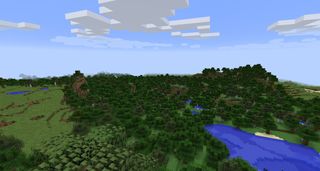
Loading into a new world—after a few experiments with seeds, of course—is like the first sip of icy water on a blazing summer’s day. Everything around you is clear, simple and refreshing, both in the literal sense of the signature aesthetic and in the ritual I must perform.
The sacred Building Of The First Hut (or Digging Of The First Hole, depending on how long I’ve spent placidly wandering) is the first opportunity to collect my thoughts. My brain disconnects as my muscle memory carries me through the task of punching trees, getting wood, making a table, crafting a pick, gathering stone and cobbling it into an appalling hovel.
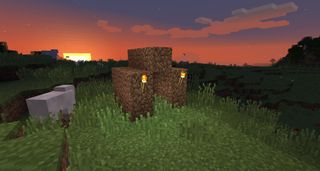
Architectural concerns are secondary. Later, depending on the magnitude of the real-world problem that forced me to seek refuge, huts become halls and fields turn to fortifications. Right now we’re looking at a 1:1 reimagining of the Hanging Gardens of Babylon.
It’s really about lasting the first few nights, though. Minecraft sparked the survival fashion, so despite its rudimentary mechanics it that regard, it’s still the quintessential wilderness. That is, until I can afford to build a real log cabin deep in British Columbia and live as a hermit with only a faithful hound for company.
Played like this, Minecraft is an infinite source of solitude. The thought of its many bustling multiplayer servers is horrifying. Sometimes it’s good to be antisocial for the sake of your sanity, and on those occasions, Minecraft has just the empty expanse for you.
Here’s What’s in This Month’s Minecraft Mine Chest Loot.
Last month I posted about the contents of the “beta” Mine Chest. If this is the first you’ve heard of it, the basic idea is the same as all those other swag box subscriptions. $29.99 a month gets you a shipment of Minecraft swag, about every 30 days, and it’s filled with some exclusive stuff you can only get via this service. This month was pretty similar to last month, in that there was a shirt, a sticker, a stamp, and other little trinkets.
The outside of the box itself looks the same, last month’s box looked like a wood block when you opened it up, and we’ve got a new material this time around, but the same basic load out of a t-shirt and a post card on top. This month’s post card has a neat 3D lenticular effect:
Here’s the back of the post card:
And the full shirt:
Getting deeper into the box yields this month’s stamp and ink pad:
The sticker (which got a little messed up in packaging):
A Hotwheels mine cart:
Two of these mystery figures:
Inside they come wrapped in a black bag so you can’t see what they are, here’s the two I got:
Last, but not least is the IRL crafting recipe:
Aaaaand here’s the instructions to make the Ghast Kite:
So, yeah, that’s this month’s Mine Chest. As an adult without kids, it’s real hard to gauge the value propositions of these boxes. Last month had a coffee cup which was pretty cool, but aside from maybe wearing the shirt, there’s nothing here for me. Maybe if I had kids they’d be super into these mini figures? Either way, if this stuff looks cool and you want a Mine Chest of your own you can sign up over on their site.
Minecraft entrepreneur Chris van der Kuyl launches Perth’s PLAYER exhibition
Scottish videogame entrepreneur Chris van der Kuyl came to Perth on Thursday this week to launch an exciting new interactive exhibition at Perth Museum and Art Gallery celebrating the evolution of videogames.
The chairman of Dundee based 4J Studios, the developers of Minecraft: Console Edition, took the opportunity to play classic games on computers and consoles from the 80s to the present day.
He said: “To see the history of console gaming in one room is incredibly exciting for anyone involved in this industry – like many I grew up playing with many of the consoles featured.
“The fact that gamers of all ages will have a chance to play on these consoles is even more fun. It’s a definite summer holiday destination for all the family.”
The exhibition features a catalogue of consoles for visitors, from passionate gamers to videogame novices, and will run until September 18.
Entry to the exhibition is £3 for adults, £2 for concessions and £10 for a family ticket (two adults, two children). To find out more about the exhibition visit
Minecraft entrepreneur Chris van der Kuyl launches Perth’s PLAYER exhibition
Deconstruction: What makes building game Minecraft so popular?
Ask kids to explain what makes the video game “Minecraft” cool and fun, and you get answers all over the board.
Do you like wandering through a forest admiring the scenery? You can do that. Want to build a battleship? You can do that. Think taming and training dogs sounds fun? You can do that, too.
Watch out for suicidal green zombie monsters that try to blow themselves up on you. Go digging on a quest to find super-rare diamonds. Mind your step through that portal. Build a tower stretching hundreds of virtual feet into the sky or dig a hole miles deep. Fight your way to the big bad Ender Dragon, but only if you want to.
(Parents, don’t bother trying to adjust the TV or computer screen. Yes, the game graphics are super blocky and pixelated. They’re supposed to be like that. It’s throwback to old-school graphics for kids who are too young to have ever played throwback Nintendo.)
Blow up that building you don’t like. Chop wood, lay bricks, mine ore. Don your armor and grab your sword and watch out for spiders. Play with friends online. Play by yourself.
Minecraft is about building, fighting, mining, crafting, collecting, exploring, farming, animal raising, planning, designing, creating, collaborating … The question soon becomes, what can’t you do in Minecraft?
And there’s not really a story. And there aren’t any stated objectives. And there aren’t any guidelines about how to play.
The game is just the raw material. The players build it into whatever they want it to be.
“I honestly don’t think there is a point. It’s just a fun game,” Stephen Smith, 10, of Avilla, said matter-of-factly, the way only a kid can.
What Minecraft actually is is an open-world sandbox game, officially released in 2011 and now available on multiple devices including computers and laptops, video game consoles, tablets and even smartphones.
Open-world means just that, it’s a widespread landscape that is open to explore however you want. The term sandbox hearkens back to the physical wooden box filled with sand of days past, a place where kids could go to imagine, build, sculpt, destroy and restart over and over.
Minecraft is novel in the aspect that, unlike most video games, there isn’t a set of objectives to accomplish. Players set their own goals, whether that’s building a massive castle to live in, fending off monsters or running in one direction just to see where you’ll end up.
And it’s not just kids, either. Search YouTube or Google and you’ll find videos from adults, too, showing off incredibly massive and complex builds that take days to construct.
“I like how it is so open-world and you can do almost anything,” Smith said, although admits he has a terrible time trying to hunt for diamonds to make better weapons and armor … or craft a jukebox.
He tried out a tutorial one time. He mined some iron and some gold, killed some mobs (Translation: monsters) and died a few times. Immediately, he was “so into it.”
He’s built a battleship that shoots fire charges and arrows. He climbs on top of trees and builds houses on top of them. He once built an underground house and installed a portal in it, because every house needs a portal.
“I don’t know why most kids like it. But the reason I like it, I love to let my imagination loose,” 7-year-old Molly Reasner of Auburn said.
You can find her tending her “sheep god” or building houses, farms or wedding arches.
Wait, what’s a sheep god? Her dad, Adam Reasner, asked in the background of the phone interview. It’s the rarest type of sheep — duh. He admitted later that he doesn’t understand what his daughter sees in the game.
“Minecraft is cool to kids, because most of the time kids are so amazed because of everything you can do. They love it because it’s so much fun and they could do anything they can ever imagine. They can farm, they can explore, in some versions you can talk. So it’s really, really fun,” said 8-year-old Sylvia Easler, Reasner’s friend and neighbor who taught her how to play.
She built Rapunzel’s tower. It was really tall — not as tall as she wanted, though, she said. She didn’t like the finished build because it was kind of plain and her green vines turned brown and gross.
She’s battled the Ender Dragon once, with help from her brother because she’s said she’s no good at archery. He’s 10, and better than her at the game. She’s no “expert,” she claimed, although she plays just about every day.
Even though kids are plopping themselves down just about daily with Minecraft, often for hours, adults aren’t necessarily trying to shoo kids out of the game and into the real world. Kids don’t realize it, but they’re probably practicing important thinking skills while playing.
“It’s amazing to see the planning. They plan, ‘Let’s build this house. Let’s put this protection fence around this house.’ They’re working together, planning ahead on what needs to happen, sometimes there are monsters that attack them and they’re having to protect themselves,” Butler Public Library children’s librarian Teri McKown said.
During the monthly Saturday Minecraft Mania at the library, kids sit down in the same room, fire up the game and go at it, McKown said. In a few short moments, they’re discussing what they want to do, how they’ll go about it and cooperating to make it happen, she said. That’s a skill — collaboration — that schools are frequently utilizing technology to try to teach.
It’s not uncommon nowadays to find libraries hosting Minecraft gatherings. Kids are already playing it, so adults just help funnel them together where they can work together.
“With Minecraft, kind of the hope or the idea behind it is (encouraging) that creativity again,” Noble County Public Library children’s librarian Derrick Leatherman said. “Just kind of along the lines of everything else we’re doing, there are all kinds of things inside of Minecraft. There have been people who have built working computers inside the game.”
Smith’s mom, Avilla Elementary teacher Jo Smith, is looking into whether Minecraft is something that could work in the classroom. It’s not something ready to roll out, but she’s inspired by watching her son navigate and interact with the blocky world. Whether it’s the planning he does to design a building, or thinking about what resources he’ll need to craft a new pickaxe or how to face and overcome pixelated perils, he’s getting more than entertainment out of it, she said.
“I see the appeal. It’s interesting because it’s very simplistic,” Jo Smith said. “It’s different than other games that are on the market. You really can see a lot of creativity.”
Speak the language
Kids and slang go together like PB and J. If your kids sound like they’re speaking a different language when they’re playing Minecraft, it’s probably just some slang. Try to impress your youngsters by dropping some Minecraft lingo:
Build: A building project. “That build took me like infinity hours!”
Butter: Gold ingots. They’re yellow and rectangular, like the stuff you spread on bread.
Creeper: Green, zombie-like suicide bombers. They do a lot of damage when they self-destruct.
Griefer: Bad people who swoop in and destroy your build. Kind of like the wildlings from Game of Thrones.
Mob: Short for “mobile.” It’s a creature. Could be harmless, like a pig. Could be deadly, like a Creeper.
Mod: Short for “modification.” Downloadable files that alter some aspect of the gameplay.
Skin: A texture file that changes how something looks. Think of it like clothes for people, or paint jobs for cars.
Spleef: A competitive sport. Players gather on an elevated platform over a pit, then slowly destroy the floor, causing people to fall. Last one above wins. Thrill-seekers can play over lava.
Vanilla: A game without any mods. Pure. Plain. Untouched. No sprinkles needed.
Hostile mobs: Bad dudes. They will chase you and attack you.
Creeper:
Ghast:
Ender Dragon:
Deconstruction: What makes building game Minecraft so popular?
Marvel’s Bruce Banner Is A ‘Minecraft’ Fan In ‘The Totally Awesome Hulk’ #8
Comics often weave in other aspects of popular culture.
It helps make comic book universes more grounded in reality and gives readers something to relate to. Whether it’s taking selfies or talking memes, comics have always adapted with the times.
Perhaps it’s fitting, then, that Marvel’s superheroes might occasionally play video games when they aren’t too busy saving the world. Fighting supervillains is hard work, and playing games can be a great way to kick back and blow off some steam. That’s exactly the case with Bruce Banner in The Totally Awesome Hulk #8, on stands now. Bruce has seemingly been cured of the Hulk, and now, he finally has some time on his hands to kick back and relax. While fellow superheroes and friends like She-Hulk play cards, Bruce sits in bed and plays the wildly-popular block-based building game Minecraft.
Apparently, Bruce has been spending more than a little time with the Mojang-developed game, though he has yet to slay the Ender Dragon. Minecraft, at first, comes off as an odd video game of choice for the onetime Hulk to play. After all, the game is filled with spiders, exploding creepers and more that would seemingly send the scientist into one of his Hulk-induced rages, whether or not he thinks he’s been cured of the Hulk forever.
It’s then that Bruce reveals he likes to play the game on Peaceful difficulty. On Peaceful mode, no hostile enemies spawn. That means no scrambling to find shelter every night or screaming when a creeper blows up an entire day’s worth of hard work. It’s definitely a calmer and more relaxing experience, and that works perfectly with Bruce’s new Hulk-free persona. According to Bruce, he wants to tame an ocelot. Given his genius-level intellect, there’s no telling what kind of insane creations Bruce could build, given the time.

In the grand context of the comic, Bruce playing the game isn’t a major plot point or moment. However, writer Greg Pak manages to turn a fun Minecraft reference into a meaningful reflection on Bruce’s new life. He’s relaxed and stress-free, and playing Minecraft on Peaceful difficulty illustrates that in a way more than a few readers instantly understand.
For more pop culture reference in Marvel Comics, you can read how Spider-Man and Deadpool feel about superhero movies here.
Marvel’s Bruce Banner Is A ‘Minecraft’ Fan In ‘The Totally Awesome Hulk’ #8
Enter to win Flynn’s Log 1 in Paperback
Enter by Oct 31

 A Nether portal in Minecraft on Gear VR. Image courtesy Microsoft
A Nether portal in Minecraft on Gear VR. Image courtesy Microsoft
 A Minecraft Creeper in theGear VR version. Image courtesy Microsoft
A Minecraft Creeper in theGear VR version. Image courtesy Microsoft My iPEGA PG-9025 controller. Photograph by Maria Korolov
My iPEGA PG-9025 controller. Photograph by Maria Korolov
 An underground Minecart track in Gear VR’s Minecraft. Image courtesy Microsoft
An underground Minecart track in Gear VR’s Minecraft. Image courtesy Microsoft
